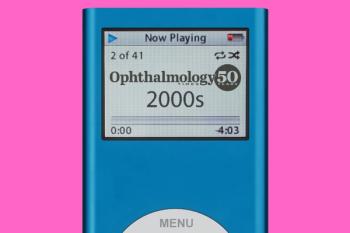
Investigators find genetic factors may influence diabetic eye disease
Baseline diabetic retinopathy severity is an important predictor of its progression in patients.
This article was reviewed by Geeta Lalwani, MD
Results from a study analyzing data from real-world patients with diabetes provided further evidence that the risk of both
Investigators also identified the existence of 3 distinct clinical subtypes among eyes with DR comprising a group at increased risk of clinically significant macular edema (CSME), a second group at increased risk of proliferative DR (PDR), and a third, smaller group at increased risk of developing both CSME and PDR within the same observation period of 5 years.
Related:
The same pattern of 3 distinct progression subtypes was present in the overall population, as well as in the subsets by DR severity.
Geeta Lalwani, MD, of Rocky Mountain Retina Associates in Boulder, Colorado, presented the findings at the American Academy of Ophthalmology’s 2020 virtual annual meeting.
“In addition to DR severity, diabetes duration, hyperglycemia, hyperlipidemia, and hypertension are major drivers of DR progression,” Lalwani said. “However, these factors account for only about 10% of the risk of DR progression, which points to the potential involvement of other risk factors.”
Lalwani said the finding of different clinical subtypes among eyes with DR suggests that PDR and DME may represent 2 distinct disease processes driven by distinct genetic factors.
Related:
“Several candidate genes have been associated with DR pathogenesis, including those associated with angiogenesis and inflammatory pathways, and these appear to result in different phenotypes,” she said. “More research is needed on the clinical and genetic factors responsible for these distinct risks of DME versus PDR development in patients with type 2 diabetes.”
The study was conducted by reviewing clinical data and DR severity grades obtained from the assessments of 7-field color fundus photograph images collected between 1999 and 2016 in the Inoveon database of patients with diabetes who participated in a retina screening program at primary clinical centers.
Eligible patients selected for the current analyses had at least 2 gradable images in either eye from 2 different time points.
The severity of DR, graded using the Early Treatment Diabetic Retinopathy Study, Diabetic Retinopathy Severity Scale (DRSS), and presence of CSME, was assessed by professional graders at a centralized reading center.
Related:
The analyses included approximately 42,000 eyes of 22,000 patients. The patients were predominantly male (83%) and had type 2 diabetes (94%). Nearly 50% of the population was white, and Native Americans comprised 41% of the group.
Outcomes data
A Kaplan-Meier analysis of data from the entire population showed that 2.7% of eyes developed at least 2-step worsening of DRSS by year 2, and the rate increased to just under 10% by year 5.
“Consistent with previous literature showing that baseline DR severity is an important predictor of DR progression, we found distinctly higher proportions of patients with higher DR severity at baseline developed an at least 2-step worsening over time,” Lalwani said.
At year 2, the rates of at least 2-step DR progression were 3.1% among eyes with mild nonproliferative DR (NPDR) at baseline and 8.4% to 12.9% for those with moderate to severe NPDR.
At 5 years, more than 35% of eyes with moderate to severe NPDR at baseline experienced DR worsening.
Related:
Analyses of time to the first development of CSME and/or PDR showed more eyes developed either CSME or PDR alone versus both together.
By year 5, the risk of developing CSME alone was 1.24%, the risk of developing PDR was just under 0.5%, and the risk of developing both CSME and PDR was 0.1% in the overall diabetes population.
The trend for distinct clinical progression subtypes was also observed in an analysis focused on subsets of eyes by DR severity at baseline, suggesting that factors other than DR severity at baseline are responsible for the distinct progression patterns.
Despite the similar pattern of clinical subtype progression, as expected, the overall rates of CSME and PDR development were much greater in the eyes with moderate to severe NPDR (DR severity levels 43, 47, and 53) than in the overall population.
By year 4, the risk of developing CSME alone was 18.7% in this group, and the risk of developing PDR alone was 10%, although both CSME and PDR developed in 2.5% of patients.
Related:
The additional analysis investigating the moderately severe and severe NPDR (DR severity levels 47 and 53) subset also found the same pattern of clinical progression subtypes in the overall diabetes population, with patients developing either CSME or PDR alone, and relatively few developing both PDR and CSME.
As expected, this subset of patients with moderately severe and severe NPDR had the highest risk of progression; however, 28.7% progressed to CSME alone, 19.8% progressed to PDR alone, and 6.6% developed both CSME and PDR within the same observation period of 4 years.
“Interestingly, these trends were also observed in the sham arm of the PANORAMA study (NCT02718326), where after a shorter 100-week follow-up (approximately 2 years), the majority of patients developed vision-threatening complications of PDR/anterior segment neovascularization or center-involved DME alone, but not both events simultaneously,” Lalwani said.
Lalwani observed that because of its nature, the Inoveon study had several limitations, including heterogeneous screening frequencies.
Related:
Lalwani mentioned that results of a retrospective cross-sectional study found that the majority of eyes with newly diagnosed PDR did not have concurrent DME, and the majority of eyes with newly diagnosed DME did not have concurrent PDR.2
In addition, Hobbs et al reported that several systemic risk factors, including sex, age, type of diabetes, glycated hemoglobin level, blood pressure, and low-density lipoprotein cholesterol control, had no significant effect on the development of DME in eyes with PDR.
“These findings also suggest that PDR and DME may present 2 distinct disease processes potentially driven by distinct genetic risk factors,” Lalwani concluded. “Further research, focusing on the clinical and genetic factors responsible for distinct risks of DME versus PDR development in patients with type 2 diabetes is warranted.”
--
Geeta Lalwani, MD
e:[email protected]
Lalwani has no relevant financial interests to disclose.
References
1. Nwanyanwu KH, Talwar N, Gardner TW, Wrobel JS, Herman WH, Stein JD. Predicting development of proliferative diabetic retinopathy. Diabetes Care. 2013;36(6):1562-1568. Wykoff CC. Retinal nonperfusion (RNP) extent and its relationship with visual, anatomic and disease state outcomes among eyes treated for diabetic macular edema. Presented at: Association for Research in Vision and Ophthalmology 2019 Annual Meeting.
2. Hobbs S, Mehta A, Patel A, Das A. Proliferative diabetic retinopathy and diabetic macular edema: are these two different disease processes? A retrospective cross-sectional study. Invest Ophthalmol Vis Sci. 2016;57(15):1592.
Newsletter
Don’t miss out—get Ophthalmology Times updates on the latest clinical advancements and expert interviews, straight to your inbox.






















































.png)


